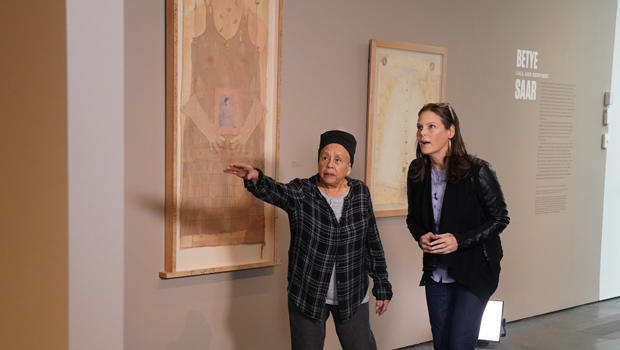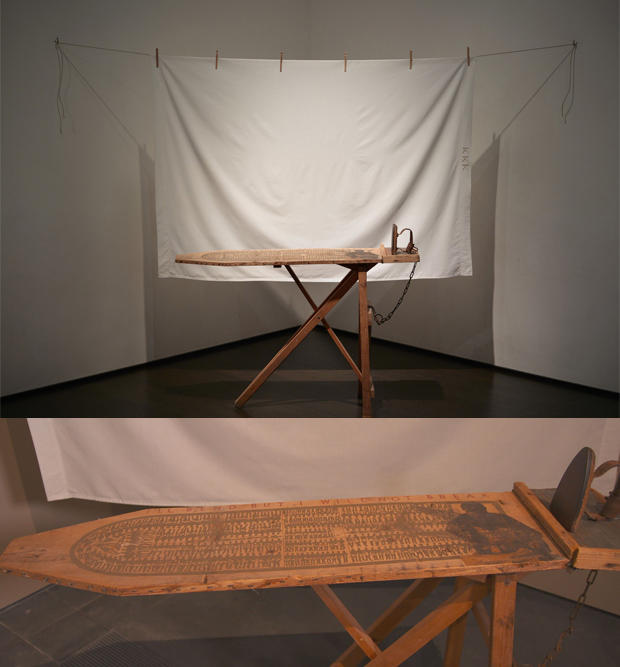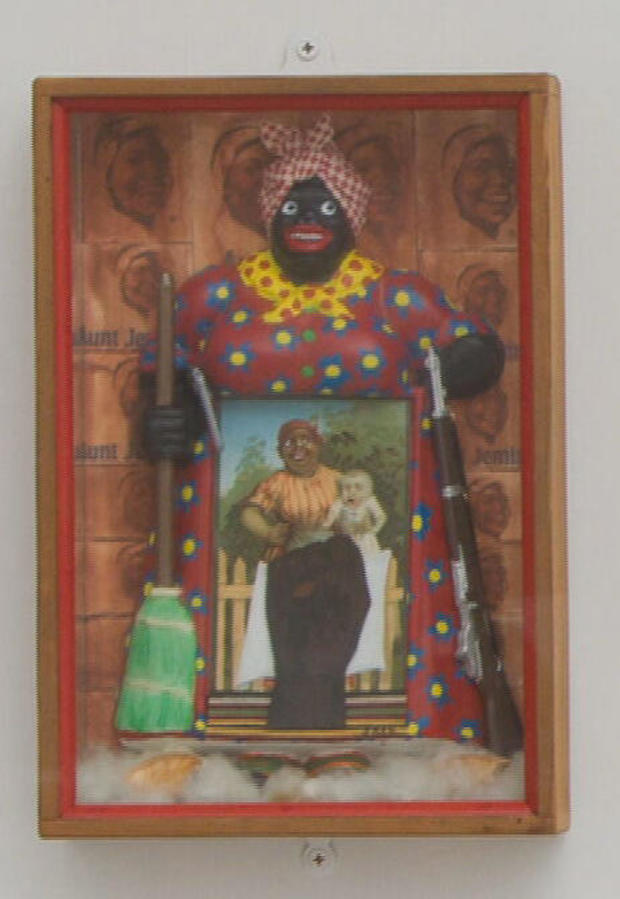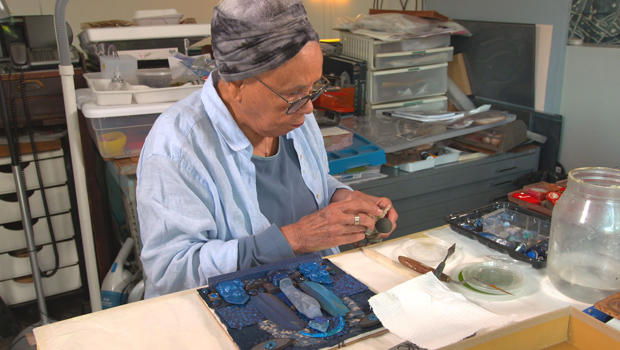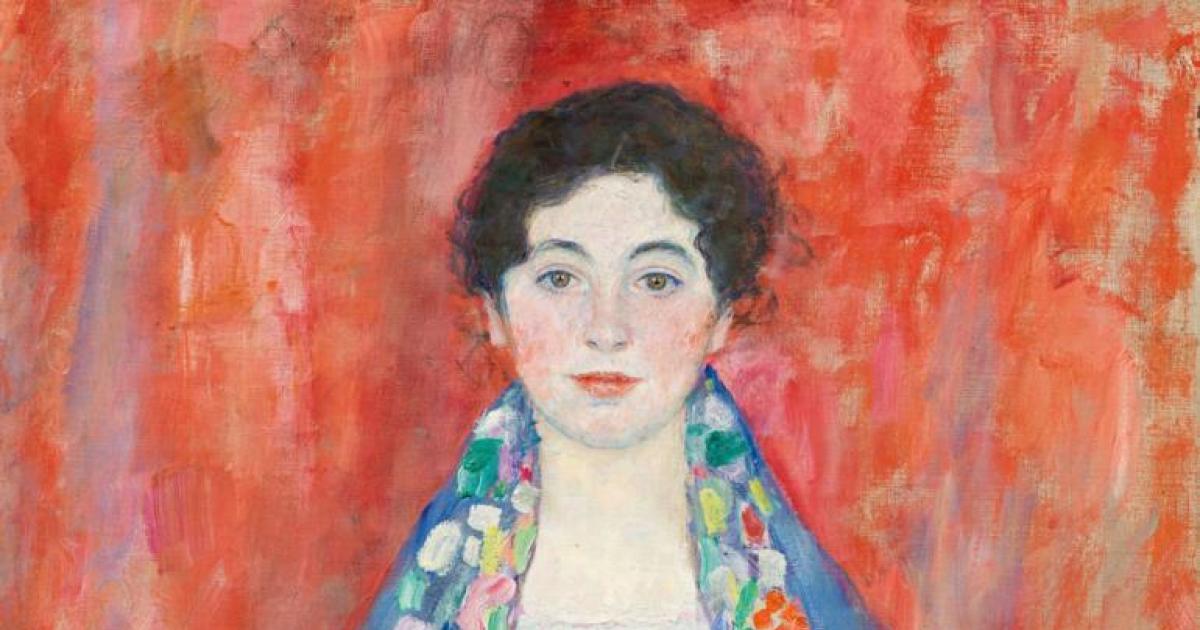Assemblage artist Betye Saar: Making the ordinary extraordinary
This past fall's annual gala at the Los Angeles County Museum of Art was a star-studded event, with dozens of celebrities gathered to honor someone not often found on red carpets.
John Legend called the focus of the event "an icon of the feminist and black arts movements."
But the woman, artist Betye Saar, described herself as, "I'm just a girl that made art and was happy making it and loves making it."
Saar is being extremely modest. In recent months the 93-year-old artist was cast in the spotlight, with major shows at New York's Museum of Modern Art and at the Los Angeles County Museum of Art; both met with glowing reviews.
Correspondent Serena Altschul said, "It's written about that this is kind of the 'Betye Saar moment.' Does it feel any different to you?"
"No," Saar replied. "Only a few more aches and pains because I'm older, but the creative part of me is forever young."
Saar's primary art form is called assemblage – sculptures made from found items that she pieces together, often addressing spirituality and black oppression.
One work from 1998, titled "I'll Bend But I Will Not Break," is comprised of a wooden ironing board decorated with the diagram of a slave transport; a sheet labeled "KKK" is hung to dry nearby.
"The shape of the ironing board reminded me of the shape of the diagram of the slave ship. So, I had that printed on that," she said.
The works turn the ordinary into the extraordinary: Birdcages become prisons, washboards are canvases, and trash is treasure.
Saar said, "My favorite place to look for objects to use in my art is a flea market or the swap meet. I look this way and I look that way and there's a little box that says, 'Come over here and look inside of me.'"
She keeps her gathered treasures in her Los Angeles studio, where she's lived and worked since 1962. It's an organized chaos, with everything separated by color and theme. Ships in one area, clocks in another – all just waiting for a second life in one of Saar's creations.
"It really is assembling – assembling the pieces and putting them together," she said.
Saar developed an interest in art while growing up in Pasadena, California. She would go on to graduate from UCLA with a degree in design, marry, and raise three daughters. "And I received a few grants. And I said, 'Oh, somebody out there sees me as an artist.' So, I just looked in the mirror and said, 'You're an artist, Betye Saar.' And just kept on making it."
Since then, she's had more than 80 solo shows in museums and galleries, gaining attention for politically-charged pieces, like one of her most celebrated works featuring a derogatory "Mammy" caricature.
"I said, 'Suppose I make her a warrior, to be liberated from her past of being a negative servant?'" Saar said. "She's still Aunt Jemima, but she has her own weapons. Not that I want to promote killing or anything like that, so I called it "The Liberation of Aunt Jemima."
Her current show at the Los Angeles County Museum of Art includes thought-provoking pieces, like a christening dress. "The title, 'The Loss of Innocence,' refers to the christening dress, and the innocence of a child, and then all the negative things that happen, starting usually with childhood, of name-calling."
Saar's race has not only impacted her art but how it's been received.
Christophe Cherix, who curated a recent show of Saar's prints at New York's Museum of Modern Art, said, "I think artists of color from her generation were just not given the chances [given] white artists. They didn't have the galleries, the infrastructures, the network.
"I really think it's the beginning of a reevaluation of her role among the artists of her generation," Cherix said.
Betye Saar's career has been defined by the way she perceives and presents the past. But when it comes to her own life, Saar isn't as reflective.
Altschul asked, "If you were looking back and you had a younger version of yourself, what would you say to her?"
"I don't think that way," said Saar. "I do it, it's over, I keep going forward. I don't look back."
For more info:
- betyesaar.net
- "Betye Saar: Call and Response" at the Resnick Pavilion of the Los Angeles County Museum of Art (through April 5, 2020) | Ticket info
- Exhibition catalogue: "Betye Saar: Call and Response" by Carol S. Eliel (Prestel), available via Amazon
- "Betye Saar" The Legends of 'Black Girl's Window'" at the Museum of Modern Art (exhibition closed) | Audio playlist
- Exhibition catalogue: "Betye Saar: Black Girl's Window" by Esther Adler and Christophe Cherix (MoMA), in Trade Paperback, available via Amazon
- Betye Saar (Robert Projects)
Story produced by Sara Kugel.
